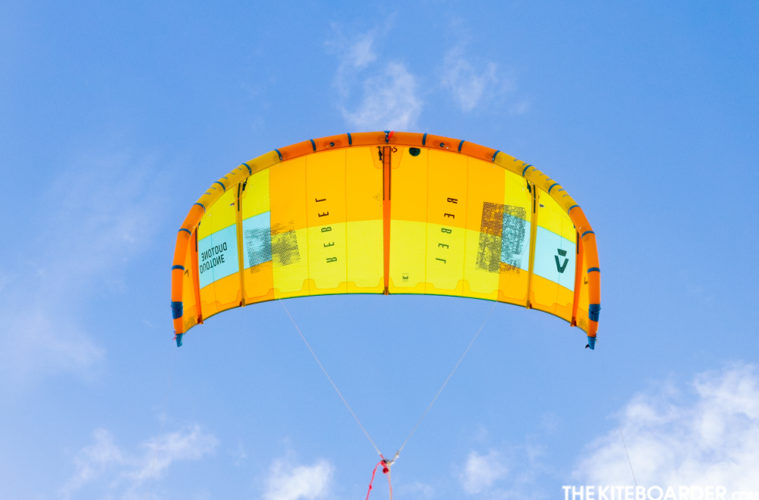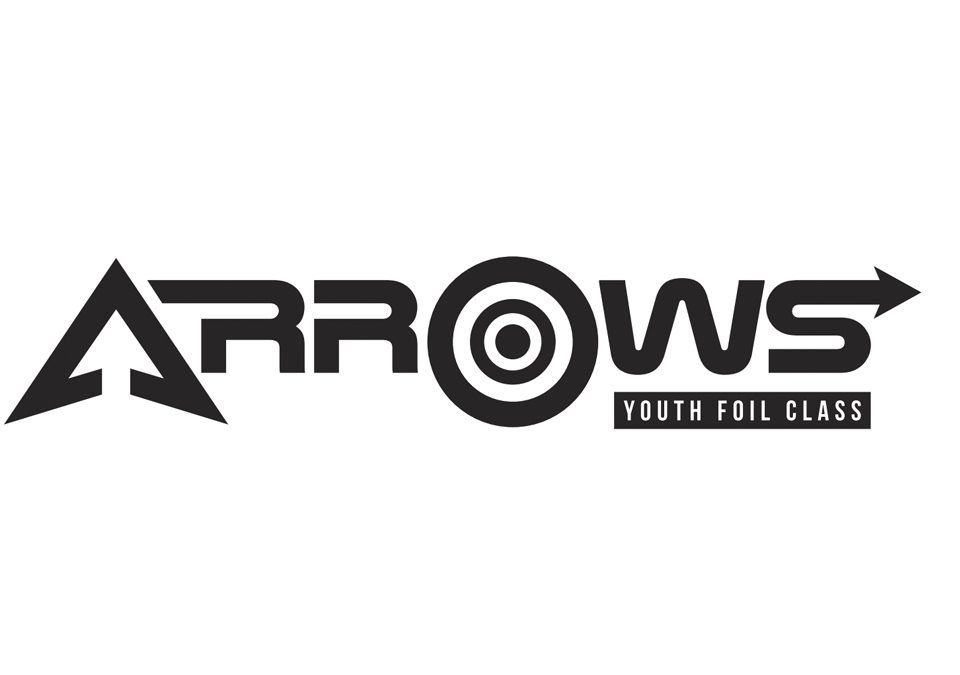Sizes Tested: 7, 9, 12m
Duotone Says:
The Rebel is the all-time classic freeride kite, legendary performance, big air superiority and a stunning hang time. Last year the Rebel had a significant overhaul that saw the design built around a 4 line set up. The kite was a huge success and this year Ken Winner has been working hard to make the best even better! Updates on the 2019 model include a smaller, reduced diameter leading edge and a flatter center shape profile. The goal was to improve the handling and boosting capabilities of the kite. The thinner leading edge makes the new Rebel more efficient, but also allows it to twist, increasing the turning speed and making the handling very dynamic. The new flatter profile in the center of the kite adds power and improves the flying characteristics. More importantly, the kite now jumps higher and floats for longer; massive airs are even easier on the new Rebel! The kite can be flown in the standard 4 line set up, or if you wish, there is a 5th line upgrade available too. The Rebel works perfectly with the Click Bar in either 4 or 5 line configuration. As ever the wind range is huge, there is plenty of low-end power, and the high-end is incredible with the 5-strut design keeping the canopy stable even in gusty conditions. Sheet and go handling makes the Rebel incredibly easy to fly, it’s suitable for riders just starting out on their kitesurfing journey as well as pro’s who want to boost to the moon and everyone in between. This iconic kite has long been the freeride standard all other kites try to emulate, now the bar is set even higher, the new 2019 Rebel will blow you away.
Visit for more info: www.duotonesports.com/kiteboarding/kites/rebel
Our Testers Say:
“The boosting machine with terrific feel, easy turning and good upwind performance. Good grunt, amazing lift with excellent hangtime. This is a must have kite for the guys that love big air.” // Mike Doucet
“Boost and lift are impressive, pulls hard with stronger bar pressure and slower turning speed. Jumps really high and stays up there.” // Giuseppe Molinario
“Boost machine, with smooth big radius looping turns, great upwind ability for easy floaty jumping. Loved the Click bar, offers easy/accurate power control.” // Dylan Dobbyn


TKB Says:
This is the first year that the Rebel is marketed under the Duotone brand, it being one of the longest standing and most popular kites in the big air/performance freeride segment. Perhaps old news, but the Rebel is now a 4-line kite for the second year in a row, but with the option to convert the stock bar into its historical 5-line mode. The Rebel is known for its legendary status as a big explosive lift kite with good hangtime and Ken Winner’s tweaks this year haven’t changed that. The Rebel uses Duotone’s large diameter inflation valve dubbed the ‘Airport Valve II’ which connects directly with Duotone’s pump hose without the use of a nozzle; the inflation system’s twist valve rotates with the insertion of the hose to keep air in the system. Deflation happens through both the inflation valve and a dump valve on one side of the kite, making both inflation and deflation quick and easy. The Rebel comes with Duotone’s adaptive wingtip design which offers two options for a soft and hard setting. The front bridles use a single setting layout with a single pulley to change the angle of attack. The Rebel comes with front bridle attachment points that end in knots and wingtip pigtails that end in loops. The 5-strut airframe gives you a stiff airframe that delivers crisp power delivery and very strong power that allows you to feel every gust transfer into the pull of the kite with excellent acceleration. The Rebel wants to be flown actively in the window because it is not quite the sheet and go kite like the Evo, but the Rebel has this punchy feel that pulls strong from the edge of the window, as if it’s just asking to be unleashed. The steering response is fairly direct and the steering arc is perhaps a little bit wider than the Evo, with middle of the road turning speed that is quite easy to place the kite for maximizing lift when jumping. We really noticed gusts transferring into direct acceleration and when we sent the kite for a big air, the lift was literally mind-blowing. Historically, the Rebel has always had a fairly short bar throw, with the kite transitioning through its angle of attack range along a smaller distance of bar movement. This year the Rebel feels like the bar’s throw distance is a little longer than before, but it’s still shorter than the Evo, which might explain why power delivery can feel punchy and a little less progressive than the Evo. The bar pressure on the Rebel is medium plus and feels a little bit heavier than the Evo, and since the Rebel is a big air pulling machine, the canopy doesn’t offer quite as much depower as the Evo. For those kiters that want an aggressive flying machine, you can crank every last inch of power out of the Rebel and that makes it extremely fun when it comes to big air launching. Sometimes in the middle of a jump as your moving the kite across the window on a big jump you’ll feel a second pulse of lift that indicates that this kite is squeezing every inch of power out of the wind. Compared to the Evo, the Rebel seemed to deliver a little bit more hangtime and potentially softer landings for those who know how to actively fly the kite. In terms of relaunch the Rebel when nose down in the water tended to react quickly to bar inputs that caused it to roll over onto a wingtip and taxi to the edge of the window, typically releasing at the edge of the window rather than the hot launch that we experienced with the Neo surf kite. This being the Rebel’s second year as a 4-line kite, we think longtime Rebel aficionados should still be incredibly happy with the changes that are made to this kite as it continues to be a high caliber lift machine that excels in all around freeride, but most particularly as a performance big air boosting kite. The Rebel can be flown with either the Click bar or the Trust bar, descriptions of both bar options below.
The Rebel can be flown with either the Click bar or the Trust bar, descriptions of both bar options below.
The Click bar is back for its third year although branded under the new Duotone label with a few changes like an updated color scheme that visually sets off one side of the bar along with the introduction of a smaller bar version. The Click bar now comes with either the smaller fixed length 42cm wide bar with 20-22m lines or the original 49cm length with 22m or 24m lines. The Click bar features a single center-line safety depower system, and an adjustable attachment point that allows you to swap back and forth between a high and low-V (it’s worth noting that you don’t have to re-thread the entire length of a line through a ring to accomplish the change). The outside lines end in knots and the center lines end in loops. The Click bar features a molded plastic throw line that untwists itself after you spin, a sliding stopper and Duotone’s proven push away quick release. The quick release when opened horizontally, locks into an open position, holding the gate open. Reassembly still requires two hands: one hand holds the loop in position and pushes on the catch button while the other hand raises the quick release handle so the catch can move back into its closed position and then the handle is released.
The Click bar settles the debate between above or below the bar tuning by placing it exactly at your fingertips. The twisting motion for powering up takes a little bit of focus while riding and the button for depower is easily accessed at all times. While it’s a big shift from the systems we have come to know, seamless controls like this are the future of the sport. The ratchet knob built into the bar end is easy to grab a hold of and easy to rotate while kiting and easy to tune on the fly. The Click bar also integrates a visual indicator that reveals the position the bar is set to – this is actually a very nice feature. Compared to other systems, the mechanics of Duotone’s Click bar is entirely closed, which means you won’t be washing it out. The Click bar features retractable bar bungees, soft bar ends and integrated floats with a fairly dense EVA grip that feels asymmetrical in your palm with subtle raised bumps between fingers, and a very comfortable stamp pattern the entire length of the bar. The Trust bar also received a colorway upgrade to the new Duotone colors for this year. The big change last year was making the Trust bar a standard 4-line bar with an optional 5th line aftermarket upgrade package (yes, it looks as if the 5-line freeride kites are going the way of the dinosaurs). Essentially, you can switch back and forth between 4 and 5-lines from the same base bar purchase. The Trust bar is a dual adjustable length bar that comes in two options, 42/49cm and a 46/53cm length. On the smaller bar you can choose between 19 or 22m lines and on the longer bar, you can choose between 24 and 27m lines. Duotone feels line length is an important tunable feature to match with your kite and style of riding. Our kites came with the 4-line base version with the single center-line safety depower that runs up to one of the bridles. The center lines are knotted for rigging purposes and the outside lines end in loops. The adjustable length spectra throw line features a tuning cleat with a magnet on the depower strap to keep it in place. The Trust has a push away quick release with a below the bar hand swivel that also functions as a quick release travel guard. At the time of purchase, you can select from four different chicken loop options (Wakestyle, Freestyle, Freeride and Rope Harness). The Rope Harness Kit is a super short loop with a metal center for rope traveler based harnesses. The second and probably most common is the Freeride kit which is smaller than the standard-length chicken loop for regular freeriders who won’t be unhooking. Then there’s the Freestyle loop that is the standard length most kites are offered with and finally a Wakestyle kit which features an extra-large loop for those that are unhooking on a regular basis. We tested the bar with the Freestyle loop, but we think the Freeride loop is an excellent idea for those kiters that won’t be riding unhooked. The Trust features a spectra trim/throw line, a sliding stopper for long tacks and a firm molded chicken finger to prevent accidental unhooking. The padded bar ends are tunable and offer integrated floats and retractable bar bungees for a clean wrap up. In addition to adjusting the length of the bar, you can adjust the length of the outside lines by pulling the bar ends apart and choosing from three color-coded knots for length options (green/blue/red). The bar grip is fairly plush EVA with middle of the road texture which makes the Trust a very comfy bar and continues to be a bar that gets rave reviews during our test week.
The Trust bar also received a colorway upgrade to the new Duotone colors for this year. The big change last year was making the Trust bar a standard 4-line bar with an optional 5th line aftermarket upgrade package (yes, it looks as if the 5-line freeride kites are going the way of the dinosaurs). Essentially, you can switch back and forth between 4 and 5-lines from the same base bar purchase. The Trust bar is a dual adjustable length bar that comes in two options, 42/49cm and a 46/53cm length. On the smaller bar you can choose between 19 or 22m lines and on the longer bar, you can choose between 24 and 27m lines. Duotone feels line length is an important tunable feature to match with your kite and style of riding. Our kites came with the 4-line base version with the single center-line safety depower that runs up to one of the bridles. The center lines are knotted for rigging purposes and the outside lines end in loops. The adjustable length spectra throw line features a tuning cleat with a magnet on the depower strap to keep it in place. The Trust has a push away quick release with a below the bar hand swivel that also functions as a quick release travel guard. At the time of purchase, you can select from four different chicken loop options (Wakestyle, Freestyle, Freeride and Rope Harness). The Rope Harness Kit is a super short loop with a metal center for rope traveler based harnesses. The second and probably most common is the Freeride kit which is smaller than the standard-length chicken loop for regular freeriders who won’t be unhooking. Then there’s the Freestyle loop that is the standard length most kites are offered with and finally a Wakestyle kit which features an extra-large loop for those that are unhooking on a regular basis. We tested the bar with the Freestyle loop, but we think the Freeride loop is an excellent idea for those kiters that won’t be riding unhooked. The Trust features a spectra trim/throw line, a sliding stopper for long tacks and a firm molded chicken finger to prevent accidental unhooking. The padded bar ends are tunable and offer integrated floats and retractable bar bungees for a clean wrap up. In addition to adjusting the length of the bar, you can adjust the length of the outside lines by pulling the bar ends apart and choosing from three color-coded knots for length options (green/blue/red). The bar grip is fairly plush EVA with middle of the road texture which makes the Trust a very comfy bar and continues to be a bar that gets rave reviews during our test week.




